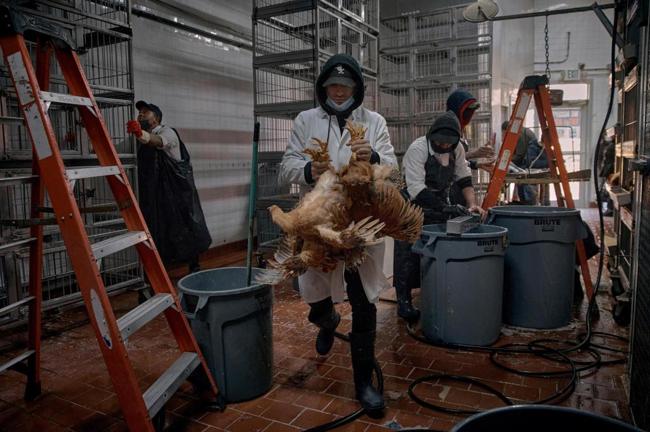Summary
During a call with U.S. doctors this month, one CDC official noted that there is a seasonality to bird flu: Cases peak in the fall and early winter, possibly due to the migration patterns of wild birds that are primary spreaders of the virus.
Source: The Denver Post

AI News Q&A (Free Content)
Q1: What are the primary reasons experts believe there have been no human bird flu cases reported in the US for the past three months?
A1: Experts attribute the absence of human bird flu cases in the US over the last three months largely to the seasonality of avian influenza, with cases peaking in fall and early winter due to migratory bird patterns. Wild aquatic birds are primary carriers, and their migration influences transmission to domestic poultry and, in rare cases, humans. Reduced contact between humans and infected birds outside these peak periods is also a significant factor.
Q2: How does the seasonality of bird migration impact the spread of avian influenza among humans and animals?
A2: Seasonal migration of wild birds plays a critical role in the spread of avian influenza. During fall and early winter, infected migratory birds come into closer contact with domestic poultry, increasing the chance of virus transmission. Human cases typically occur after prolonged close contact with infected birds, which is more likely during these periods. Outside migration peaks, the risk of spillover events to humans is substantially lower.
Q3: What recent mechanistic models have been developed to study avian influenza virus transmission, and what insights have they provided?
A3: A 2023 systematic review of mechanistic models found that these models have been instrumental in estimating transmission parameters and evaluating control measures for avian influenza in real-world scenarios. They have helped identify the effectiveness of interventions like culling, vaccination, and movement restrictions, underscoring the importance of rapid response and surveillance to control outbreaks.
Q4: What are the symptoms of avian influenza in humans, and how severe are the health outcomes?
A4: Human infection with avian influenza is rare but can range from mild symptoms such as fever and cough to severe respiratory distress, pneumonia, and even death. The World Health Organization reports a case fatality rate of approximately 50% among confirmed H5N1 human cases worldwide, although the true rate may be lower due to undetected mild cases.
Q5: How do regulatory bodies in the US approach the containment of avian influenza to protect human health?
A5: US regulatory agencies, including the Centers for Disease Control and Prevention (CDC) and the Department of Agriculture, implement surveillance of wild and domestic bird populations, enforce culling of infected flocks, and recommend avoiding contact with sick or dead birds. These measures, along with public education campaigns, are crucial in preventing zoonotic transmission and safeguarding public health.
Q6: What role does vaccination play in controlling avian influenza outbreaks in poultry, and what are its limitations?
A6: Vaccination can help protect domestic poultry from specific avian influenza strains, reducing the risk of large outbreaks and transmission to humans. However, its effectiveness depends on matching the vaccine to circulating strains, and not all poultry operations implement vaccination. Furthermore, vaccination does not eliminate the virus from bird populations, so surveillance and rapid response remain necessary.
Q7: Based on recent research, what are the most effective strategies for preventing human cases of avian influenza in the US?
A7: Recent research highlights the importance of integrated surveillance systems, quick isolation and culling of affected flocks, and public awareness to prevent human cases. Mechanistic modeling studies reinforce that early intervention, combined with movement restrictions and targeted vaccination, are key to preventing spillover events from birds to humans.
References:
- Avian influenza - https://en.wikipedia.org/wiki/Avian_influenza
- Influenza A virus subtype H5N1 - https://en.wikipedia.org/wiki/Influenza_A_virus_subtype_H5N1





